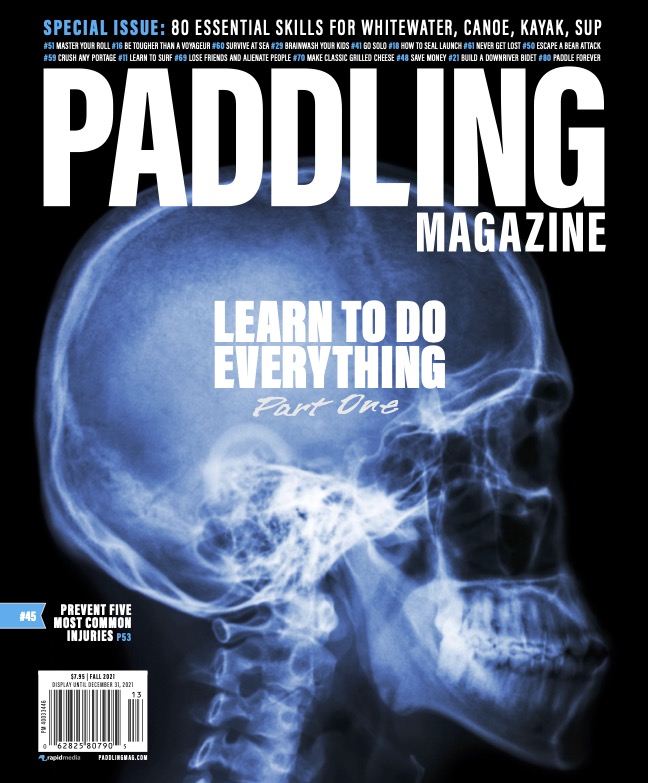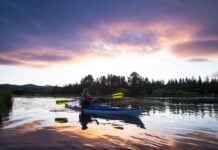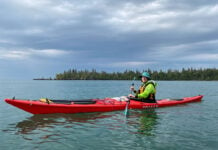In the deep, fast rivers of the North and West a capsized canoe could float for miles before being spit out of the current and into an eddy. Often a sprayskirt and tied-in packs will make a canoe-over-canoe rescue impossible. In these circumstances, your next best bet to wrangle the runaway is a rodeo-style canoe rescue. Read on for all the info you need to safely carry out this maneuver.
How to Complete a Rodeo Canoe Rescue
For the sake of the paddlers, the capsized canoe, the jettisoned packs and the rest of the group, you need a way to get a current-borne canoe to shore.
The paddlers in the water are your first concern—regardless of which food barrel was in their canoe. The canoe will be like an iceberg, more below the water than above, so use caution in shallow water to avoid getting people between the capsized canoe and obstacles, or getting the canoe pinned.
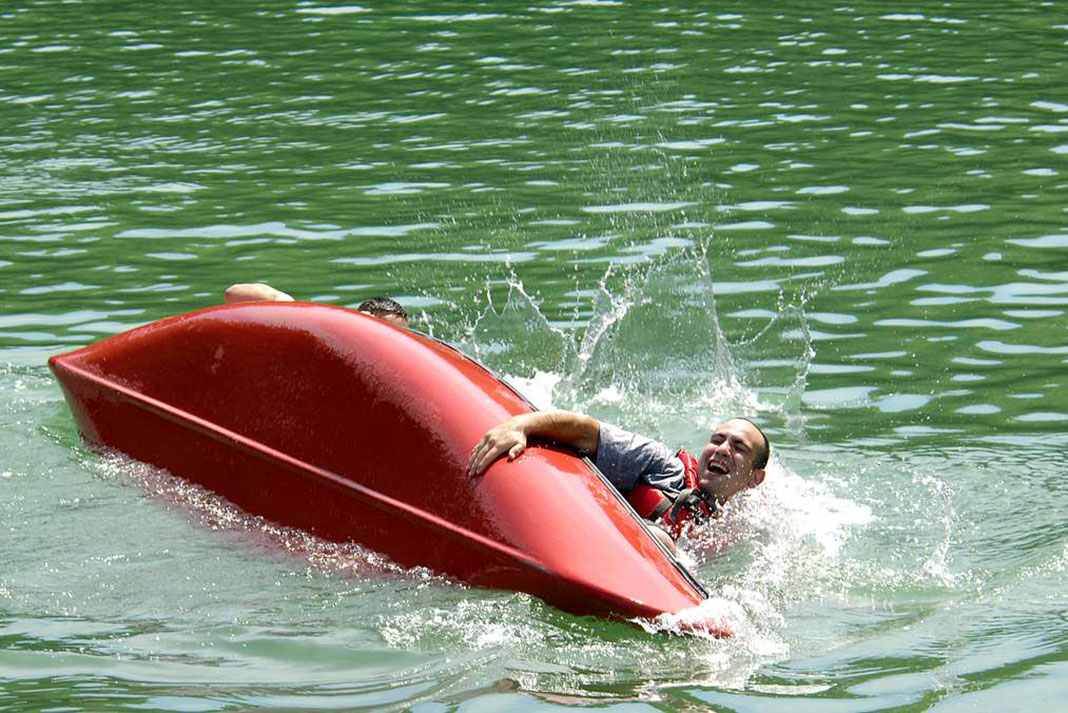
To properly envision a rodeo rescue, imagine yourself with chaps and a lasso, but keep it clean. Think of a cowboy roping a calf at the Calgary Stampede. You’re going to attach a rope to the canoe, wait for your moment, then paddle as fast as you can to shore where you can pendulum the canoe to safety.
Essential Gear for a Rodeo Rescue
You’ll need a number of throw bags linked together with carabiners. On some wide and fast rivers you could use up to four 20-meter throw bags.
Have the ropes ready with the free end of each rope clipped to the next bag’s end loop. When you reach the capsized canoe, you as a stern paddler should clip the free end of the last throw bag to the downstream end of the capsized canoe and then wait beside the floating canoe until the canoes enter a belay zone, a stretch of river where the shore is close enough and the current is slow enough you will be able to paddle downstream to shore and get out of the canoe before the rope goes taut.
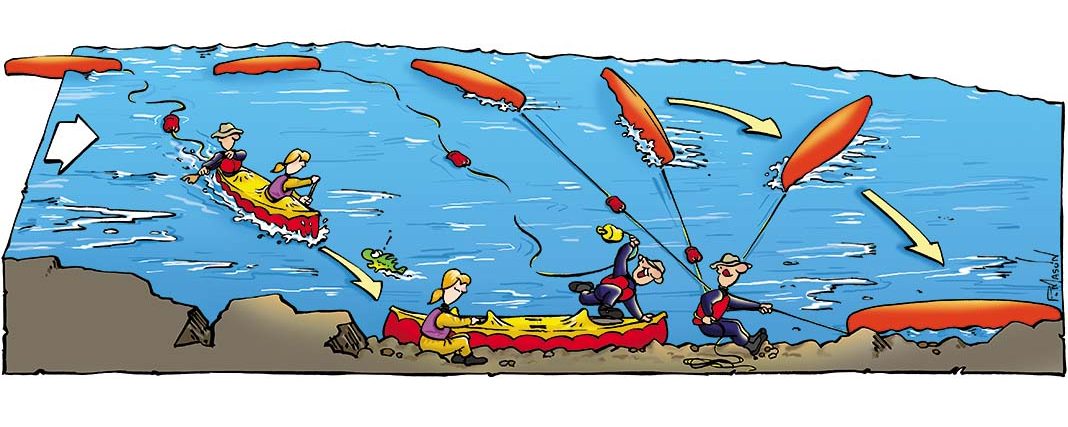
When you get to shore, jump into the shallow water or onto shore, anchor yourself with a safe stance or with the rope braced around a tree or rock. As the rope becomes taut there will be a strong pull. As long as you hold fast, the canoe will swing to shore.
Be Certain of Your Belay Zone
It is tempting to rush, but if there isn’t an upcoming rapid, it’s better to wait until you have a sure belay zone where the stern paddler will be able to get out of the canoe with the rope while the bow paddler secures the rescue canoe.
As you paddle toward shore you’ll be in slower water so the capsized canoe may overtake you. If you run out of rope before you reach shore, you’ll end up trying to tow more than a ton of canoe, gear and water. The capsized canoe will soon pull you directly upstream of it. Try to ferry toward shore, but if you are being overpowered pull some rope in, turn downstream and overtake the canoe until you see another belay zone.
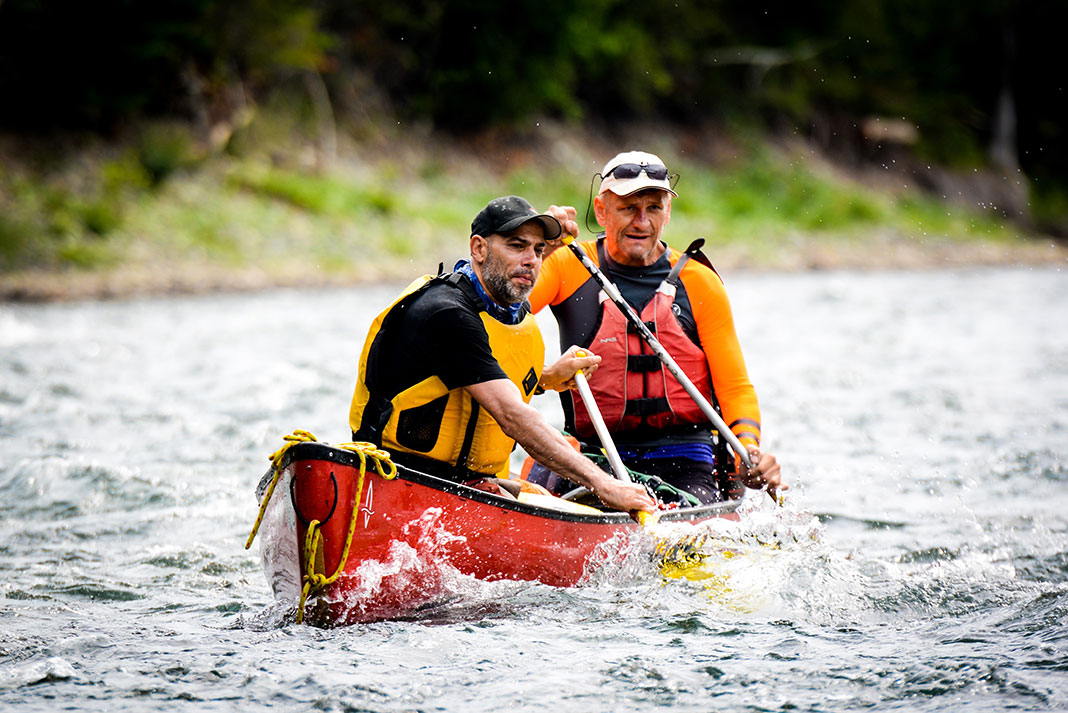
The safest method for retaining your end of the rope is to hold the last throw bag down with your knee. This lets you paddle freely and release the rope quickly if the capsized canoe seems intent on running the next rapid. Make sure there are no loose coils of rope in the canoe that could wrap around your leg.
Rodeo Rescue Your Own Canoe, Too
If you are in the capsized canoe and no cowboys are coming to the rescue you can try to wrangle the canoe yourself by swimming to shore with a rope. For this attempt you’ll need to have the rope already clipped to a grab loop, with the throw bag held down with a shock cord. Be patient and wait until the canoe floats into a very good belay zone so you won’t run out of rope and be towed back into the faster current.
This article originally appeared in Paddling Magazine Issue 65. Subscribe to Paddling Magazine’s print and digital editions here, or download the Paddling Magazine app and browse the digital archives here.
Attach a rope to the runaway canoe, wait for your moment, then paddle as fast as you can to shore. | Feature photo: Felix Serre/Unsplash


